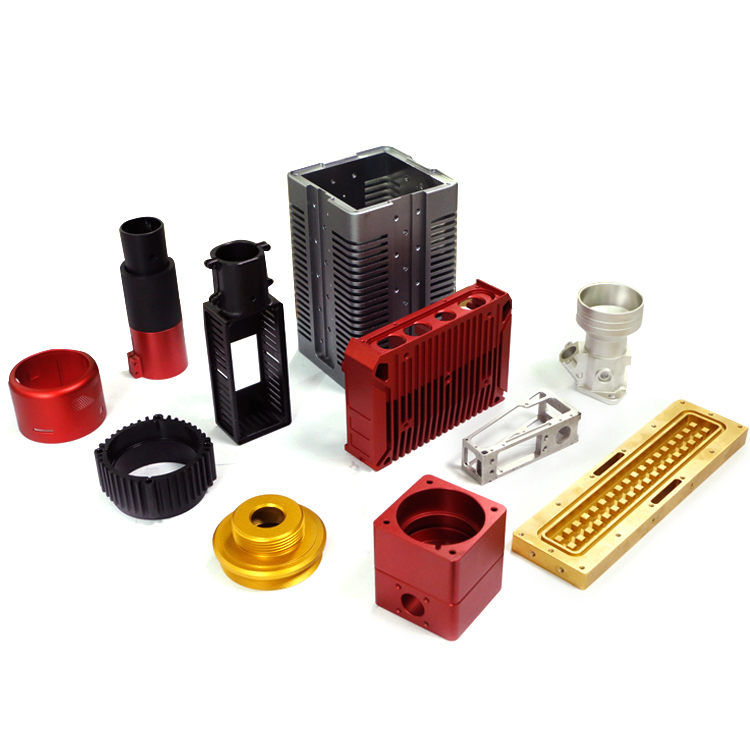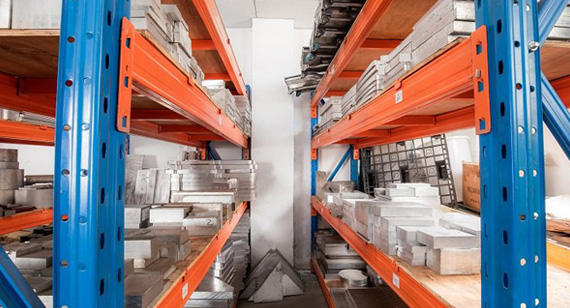15 years one-stop China custom CNC machining parts factory

Hey there I’m VMT Sam!
With 25 years of CNC machining experience we are committed to helping clients overcome 10000 complex part-processing challenges all to contribute to a better life through intelligent manufacturing. Contact us now
 241 |
Published by VMT at Jul 13 2024
241 |
Published by VMT at Jul 13 2024
Understanding the Basics of AL6061 and AL6063 Aluminum
In the realm of aluminum alloys, 6061 and 6063 are two widely used materials, each possessing unique chemical compositions, physical properties, and mechanical performance suitable for different applications. This article explores the differences between these two aluminum alloys, helping readers make informed decisions when selecting materials.

Elemental Composition
6061 aluminum alloy primarily consists of aluminum (Al), magnesium (Mg), silicon (Si), and copper (Cu). It has relatively high magnesium and silicon content, with magnesium at 0.6% and silicon at 1.0%, while copper ranges from 0.15% to 0.4%. Additionally, it contains small amounts of chromium (Cr) and other elements, which collectively contribute to its distinctive properties.
Performance Characteristics
Strength and Hardness: Due to its higher magnesium and copper content, 6061 aluminum alloy has high tensile strength and yield strength, along with relatively high hardness.
This makes it suitable for applications requiring substantial load-bearing and pressure resistance.
Corrosion Resistance: The addition of copper enhances the corrosion and oxidation resistance of 6061 aluminum alloy, making it ideal for marine environments, chemical industries, and other fields requiring high corrosion resistance.
Weldability: 6061 aluminum alloy has good weldability and is suitable for various welding methods such as MIG and TIG, facilitating the manufacture of complex structures.
Thermal Conductivity: Its high thermal conductivity makes it suitable for applications requiring efficient heat dissipation, such as electronic devices and heat exchangers, ensuring stable operation.
Applications
6061 aluminum alloy is widely used in aerospace, automotive, and transportation equipment. For instance, it is often used in aircraft frames, fuselage structures, and landing gear. It also finds extensive use in mechanical manufacturing and precision machining.
Elemental Composition
6063 aluminum alloy primarily comprises aluminum (Al), magnesium (Mg), and silicon (Si), with silicon content ranging from 0.2% to 0.6% and magnesium from 0.45% to 0.9%. Compared to 6061, 6063 has lower magnesium and copper content, leading to some differences in performance.
Performance Characteristics
Plasticity and Ductility: The lower magnesium and copper content give 6063 aluminum alloy excellent plasticity and ductility, making it easy to process and form, suitable for various cold bending and forming processes.
Corrosion Resistance: While 6063 aluminum alloy's corrosion resistance is not as high as 6061, it still offers good corrosion resistance, meeting general environmental use requirements.
Extrudability: 6063 aluminum alloy excels in extrudability, allowing the production of complex shapes and profiles widely used in construction, decoration, and furniture industries.
Surface Treatment: 6063 aluminum alloy is easily anodized, resulting in smooth and aesthetically pleasing surfaces, suitable for various decorative and protective applications.
Applications
6063 aluminum alloy is especially prevalent in the construction industry, used for door and window frames, curtain wall structures, and display racks. Its excellent surface quality meets diverse design needs. Additionally, it is extensively used in tubular railings and furniture frames.
Elemental Composition
6061 Aluminum Alloy: Contains higher amounts of magnesium, silicon, and copper.
6063 Aluminum Alloy: Has lower levels of magnesium and silicon, with minimal copper content.
Performance Characteristics
Strength and Hardness: 6061 aluminum alloy has higher strength and hardness than 6063, suitable for high-load applications.
Plasticity and Ductility: 6063 aluminum alloy offers better plasticity and ductility, making it easier to process and form.
Corrosion Resistance: 6061 aluminum alloy has superior corrosion resistance, especially in marine and chemical environments.
Thermal Conductivity: 6061 aluminum alloy's higher thermal conductivity makes it ideal for heat dissipation needs.
Physical Properties
Density: Both have similar densities, with slight variations due to production processes and alloy composition.
Color and Appearance: Both can be anodized to different colors, with the specific effect depending on treatment and dye choice.
Mechanical Properties
Tensile and Yield Strength: 6061 aluminum alloy has higher tensile and yield strength than 6063.
Fatigue Strength: Higher strength and hardness give 6061 aluminum alloy better fatigue strength.
Chemical Composition Performance
Corrosion Resistance: 6061's copper content enhances corrosion resistance in specific environments. While 6063 also has good corrosion resistance, it may require additional protection in extreme conditions.
Weldability: 6061 requires careful welding to avoid hot cracking and strength reduction, but generally has good weldability. 6063's lower alloy content makes it easier to weld with various processes.
6061 Aluminum Applications
Aerospace: Used for aircraft structures, landing gear, and engine parts due to its high strength and corrosion resistance.
Automotive Manufacturing: Utilized for vehicle bodies, suspension systems, and engine components to enhance performance and safety.
Mechanical Manufacturing: Commonly used in precision machining for high-strength, lightweight components.
6063 Aluminum Applications
Construction: Primarily used for door and window frames, curtain wall structures, railings, and decorative trim due to its formability and aesthetic appeal.
Furniture Manufacturing: Employed in furniture frames and supports for its lightweight, strength, and ease of processing.
Electronics: While not as widespread as 6061, 6063 aluminum is used in certain electronic components for its conductivity and formability.

Aluminum Bars
6061 Aluminum Bar: Used in machining, forging, and heat treatment for high strength and excellent mechanical properties.
6063 Aluminum Bar: Mainly used as raw material for extrusion due to its excellent extrusion performance.
Aluminum Plates
6061 Aluminum Plate: Applied in high-strength and corrosion-resistant scenarios like aerospace and automotive.
6063 Aluminum Plate: Less commonly used directly but can serve as decorative panels or undergo further processing.
Aluminum Tubes
6061 Aluminum Tube: Favored for hydraulic systems and gas transport for its strength and corrosion resistance.
6063 Aluminum Tube: Commonly used in decorative tubes and furniture pipes for its aesthetics and ease of processing.

When selecting between 6061 and 6063 aluminum alloys, consider the specific requirements of your project, including the needed strength, corrosion resistance, machinability, and cost. If your project demands high strength and corrosion resistance with significant load-bearing needs, 6061 aluminum alloy is likely the better choice. However, if the project emphasizes appearance, ease of processing, and cost-effectiveness without stringent strength requirements, 6063 aluminum alloy may be more suitable.
As a professional CNC machining manufacturer, VMT Aluminum CNC Machining provides customized CNC machining services for 6061 and 6063 aluminum alloys, including cutting, drilling, milling, and turning. With advanced CNC equipment and experienced technicians, we ensure machining precision and product quality. Whether producing complex mechanical parts or exquisite architectural decorations, VMT Aluminum CNC Machining can meet your needs.

6061 and 6063 aluminum alloys each have unique properties and application areas. This comparative analysis helps readers understand the differences between these two alloys, allowing for more informed material selection. Both 6061 and 6063 aluminum can play vital roles in their respective fields, whether for high strength and corrosion resistance or aesthetic appeal and ease of processing.
Which is better for anodizing, 6061 or 6063?
Both can be anodized, but 6063 typically yields a more uniform, shiny oxide film due to its superior surface quality. The choice depends on project requirements and desired effects.
Can 6063 aluminum be extruded?
Yes, 6063 aluminum alloy is renowned for its excellent extrusion performance, producing complex profiles used in construction, decoration, and furniture.
Which is stronger, 6061 or 6063?
6061 aluminum alloy is generally stronger than 6063 due to its higher magnesium, silicon, and copper content, which enhances its tensile and yield strength. However, 6063 still meets many general industrial needs.
What is the strongest extruded aluminum?
"Strongest extruded aluminum" is a relative term, as strength depends on alloy composition, heat treatment, and processing. High-strength aluminum alloys like the 7000 series may be stronger but are more difficult and costly to extrude. For most applications, 6061 aluminum alloy is considered robust and practical.
Which aluminum is stronger than 6061?
Aluminum alloys such as 7075 and 2024 are stronger than 6061, with higher proportions of zinc, copper, and magnesium. However, they are more challenging and expensive to process and may not be as corrosion-resistant in certain environments. Material selection should consider specific project requirements and cost-effectiveness.
Summary
This detailed comparison and analysis show the differences between 6061 and 6063 aluminum in terms of elemental composition, performance characteristics, physical properties, mechanical properties, and application areas. When choosing between these two aluminum alloys, consider project-specific needs, performance requirements, cost-effectiveness, and processing ease. Both 6061 and 6063 aluminum can provide reliable solutions for various engineering projects.
Collaborating with a professional CNC machining manufacturer like VMT Aluminum CNC Machining, with rich experience and advanced equipment, ensures your project's success and high-quality completion.
Ready To Start Your Next Project?
Get Instant Quote

Request a Free Quote
Send us a message if you have any questions or request a quote. We will get back to you ASAP!